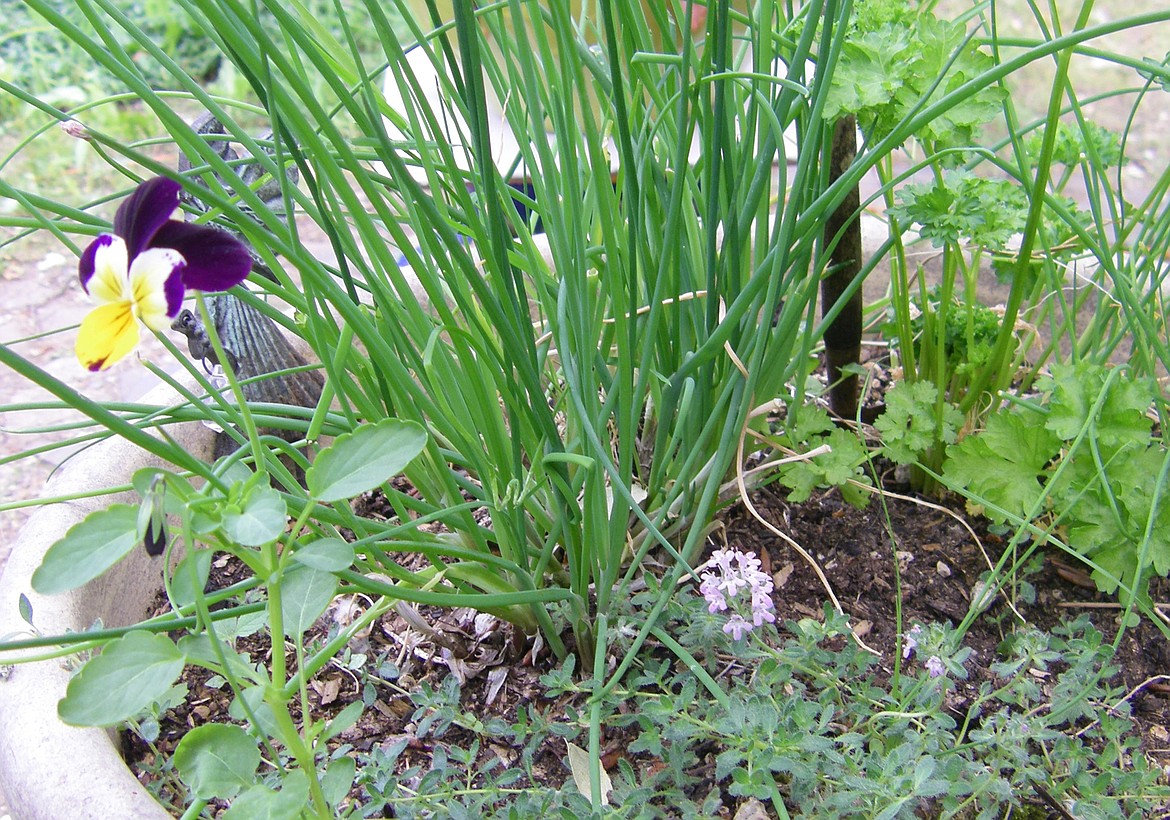Give tender veggies, flowers a headstart in pots
Fickle May’s whims have — at least in many areas — forced a holdback to gardening season. With many starts ready to plant, the soil is still too cold for direct planting of tender veggies or the tiny plants nurtured on a windowsill or in a greenhouse.
The answer, of course, is pots. Whether actual pots, windowsill or porch planters, old wheelbarrows or other containers, enclosed planting allows for continued protection of your started vegetables, flowers and herbs. A tossed-on cover of row-cover (Remay) or light plastic can always provide safety from the elements or overnight while still allowing the plants to get used to the coolness of the outdoors.
Certain of your plant holding choices - especially a wheelbarrow or small wagon — provide easy access to a permanent garden site when the soil’s ready for permanent transplants. But container planting can be a permanent planting lifesaver, especially if you have a hopeless soil situation — as I do.
My rocky, sandy, mossy site at the base of Schweitzer is pretty much unplantable. In the case of some small ornamental trees or shrubs — Siberian Pea, Azalea, etc., I have (painfully) dug large, deep holes to fill with rich soil and other mediums for planting and it has been successful. But that’s for individual cases. Large pots not only fill the bill in such cases but serve as attractive lawn focal points as well.
I have two huge matching pots at either side of my driveway halfway to the house, and they not only look lovely on their own but serve to draw the eye from the remaining pretty much abysmal surroundings.
In the vegetable garden itself, pots can be used to grow and feature some plants that don’t do well with others. Fennel comes to mind. It is an enemy to most plants but is such an asset to culinary use as well as really pretty in the garden that making it into a feature plant is a natural. Another possibility is mint. Beau-tiful, fragrant, necessary for iced tea (and Mojitos.) mint can be invasive in a garden. Contained in a pot, however, it becomes a pretty garden fillip.
By the way, those nifty large pots with saucer-like protrusions for planting — called strawberry pots — while not really doing the job for ordinary strawberries, are perfect for the tiny native Alpine strawberries. I learned this after much agonizing over what I considered a real misnomer. I have also had success with mine as home for Johnny Jump-ups. It’s a true terra-cotta pot and much better than plastic look-alikes. Generous watering is a necessity, however.
Our illustration is of my own herbal potager, kept ever-ready on the front deck for snipping fresh chives, parsley, etc., at the very time they’re needed in the kitchen. I can’t imagine why everyone doesn’t have one. Even non-gardeners or apartment dwellers can have one on the porch or balcony, and the pretty interplay of green herbs and bright flowers brightens even the darkest or loneliest day.
Herbs and small vegetables are especially accepting of containers, and the convenience of being able to gather a complete salad from one pot is appealing. Don’t be afraid to “crowd” your choices: plan for high-growers, creepers and clump-growers for equal distribution of soil space and sun-catching. Possible choices include the following: Japanese eggplant, cherry or grape tomatoes and/or peppers, clumps of cilantro, parsley and/or marigolds, one or two kinds of chives, creepers like thyme and nasturtiums. How beautiful would any of those be?
Later in the season, say mid-June, a pot with one large-fruited tomato surrounded by various basils could be added to your collection. Basil is not only beautiful but good for the tomato, as is rosemary and tarragon — both vital herbs that must await later planting. You’ll want plenty of basil and rosemary for tomato and pasta dishes, and who ever heard of fresh green beans without tarragon?
For now, prepare your pots and other containers with fresh potting soil, set in your tender “babies” and give them sun and protection for mid-June transplanting into the garden. Here’s to a successful season.

